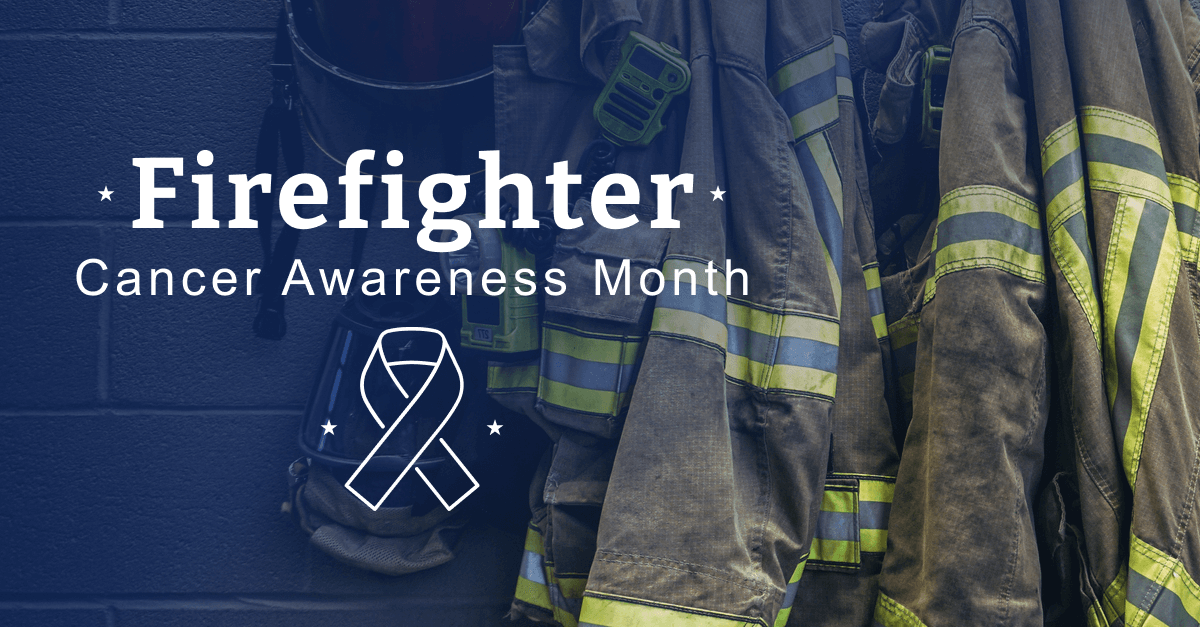January is Firefighter Cancer Awareness Month. Firefighters are twice as likely as the general population to develop certain cancers. This is because the settings for fighting fires may contain hundreds of hazardous substances, including asbestos. Further, the foam firefighters use to put out blazes may also contain cancer-causing substances. During Firefighter Cancer Awareness Month and beyond, firefighters should know how to protect themselves. Learn more about risks and prevention.
Why Are Firefighters at Risk of Cancer?
Firefighters are at a higher risk of cancer because they are more likely to be exposed to cancer-causing materials on the job.
Hazardous substances that put firefighters at risk of cancer include:
- Asbestos, a fibrous material that causes mesothelioma and other cancers
- Firefighting foam, which contains chemicals linked to serious cancers
- Other chemicals found in smoke, soot, etc.
Since both asbestos and firefighting foam were used by the U.S. military for decades, military firefighters are at a high risk of developing cancer. This includes those who worked as aviation fire control technicians and fire controlmen.
“Firefighter occupational cancer is the leading cause of line-of-duty deaths in the fire service.”
—International Association of Firefighters
Tragically, from 2015-2020, 75% of the fallen firefighters added to the International Association of Firefighters’ (IAFF) Fallen Firefighter Memorial died from occupational cancer.
Firefighter Cancer Awareness Month is a good time for civilian and military firefighters to be reminded about their cancer risk and take steps to stay safe.
Firefighters & Asbestos Cancer Risks
Fighting fires puts people at risk of being exposed to hundreds of chemicals. These could be gasses, particulates, and vapors. One of the most dangerous substances that firefighters can be exposed to is asbestos.
Asbestos was used in many buildings between the 1930s and early 1980s to make them durable and fire-resistant. Sadly, asbestos exposure can lead to mesothelioma, a deadly cancer with no known cure.
Numerous health studies have linked firefighting and mesothelioma together. According to the National Institute for Occupational Safety & Health, firefighters are twice as likely to develop mesothelioma compared to the general population. Firefighters are also at risk of other asbestos-related diseases if they were exposed.
For the most part, firefighters do not receive any advanced notice about the presence of hazardous substances, such as asbestos, before they respond to a fire.
“Since asbestos is a substance that’s not an issue unless disturbed in some way, there’s no way for them to know before they arrive if it’s in a building’s tile glue, ceiling tiles, etc.”
—Spokesperson for Austin, Texas Fire Department
Without advanced warning, firefighters cannot take necessary precautions to prevent deadly asbestos exposure.
U.S. military firefighters who worked on bases, barracks, vehicles, and ships were also likely exposed to the deadly substance since the military used tons of asbestos-based products for decades.
Even today, asbestos poses a threat to firefighters as older structures may still contain asbestos.
Cancer Risks from Firefighting Foam
In addition to asbestos exposure, firefighters are also at risk of cancer from aqueous film-forming foam (AFFF), more commonly known as firefighting foam.
Firefighting foam is used in training and emergency responses in:
- Airports
- Chemical plants
- Firefighting training facilities
- Military bases
- Refineries
- Shipyards
The foam is used to extinguish liquid-based fires. It contains perfluoroalkyl and polyfluoroalkyl substances (PFAS), which can build up in the human body over time and cause cancer.
Firefighting foam has been linked to at least 12 types of cancer, like:
- Bladder cancer
- Breast cancer
- Colon cancer
- Kidney cancer
- Leukemia (cancer of the blood cells)
- Liver cancer
- Lymphoma (cancer of the lymph nodes)
- Pancreatic cancer
- Prostate cancer
- Rectal cancer
- Testicular cancer
- Thyroid cancer
According to Environmental Working Group, the U.S. Department of Defense knew as far back as the 1970s that firefighting foam was toxic. However, it continued to allow the foam to be used.
Additionally, the military mandated the use of firefighting foam beginning in the 1960s, putting military firefighters at risk. Firefighting foam is still in use even today, though the military has plans to phase it out by 2024.
Reducing Risks of Cancer Among Firefighters
Firefighter Cancer Awareness Month serves as an important reminder to the brave men and women who put their lives on the line to learn about reducing their cancer risk while they work to put out fires.
This month and always, firefighters must be given the guidance and tools they need to develop cancer prevention protocols that can be lifesaving.
Important measures firefighters can take to reduce cancer risk include:
- Cleaning firefighting equipment: Firefighters may come back to their stations with their suits and equipment covered in toxic chemicals — cleaning off the gear can reduce the risks of cancer.
- Getting tested often: Cancers like mesothelioma can develop and spread quickly with little to no symptoms. Catching cancers early may mean that more treatment options will be available. Those at risk should not ignore possible symptoms and get screened regularly.
- Wearing protective gear: Personal protective equipment (PPE) and self-contained breathing apparatuses (SCBAs) go a long way to reducing the risk of cancer. Firefighters should always use PPE when appropriate.
Participating in Firefighter Cancer Awareness Month
Firefighter Cancer Awareness Month offers a lot of activities you can do to support the brave men and women who risk their lives to put out fires.
You can participate in Firefighter Cancer Awareness Month by:
- Organizing a training program: The Firefighter Cancer Support Network, which helps firefighters diagnosed with cancer, has outlined a week-by-week program to educate firefighters about cancer risks and how to reduce them. Fire chiefs can use this and other resources to train firefighters.
- Hearing stories of survivors: Survivor stories can help inspire others to keep fighting. The Firefighter Cancer Support Network has a long list of survivor stories available on its website.
- Spreading the word on social media: Use the hashtags #FFCancerMonth or #FightFFCancer to ensure others know about Firefighter Cancer Awareness Month and take the time to assess their own risks.
Additionally, increasing public awareness of the particular occupational risks firefighters face helps get the attention of policymakers. With legislative support, presumptive disability benefits can be established for firefighters who have developed occupational cancer.
No firefighter deserves to develop cancer. The Mesothelioma Veterans Center is here to support firefighters — and anyone else — who gets sick after exposure to asbestos or AFFF.
If you would like more information for yourself or a loved one, call (877) 450-8973 now.

